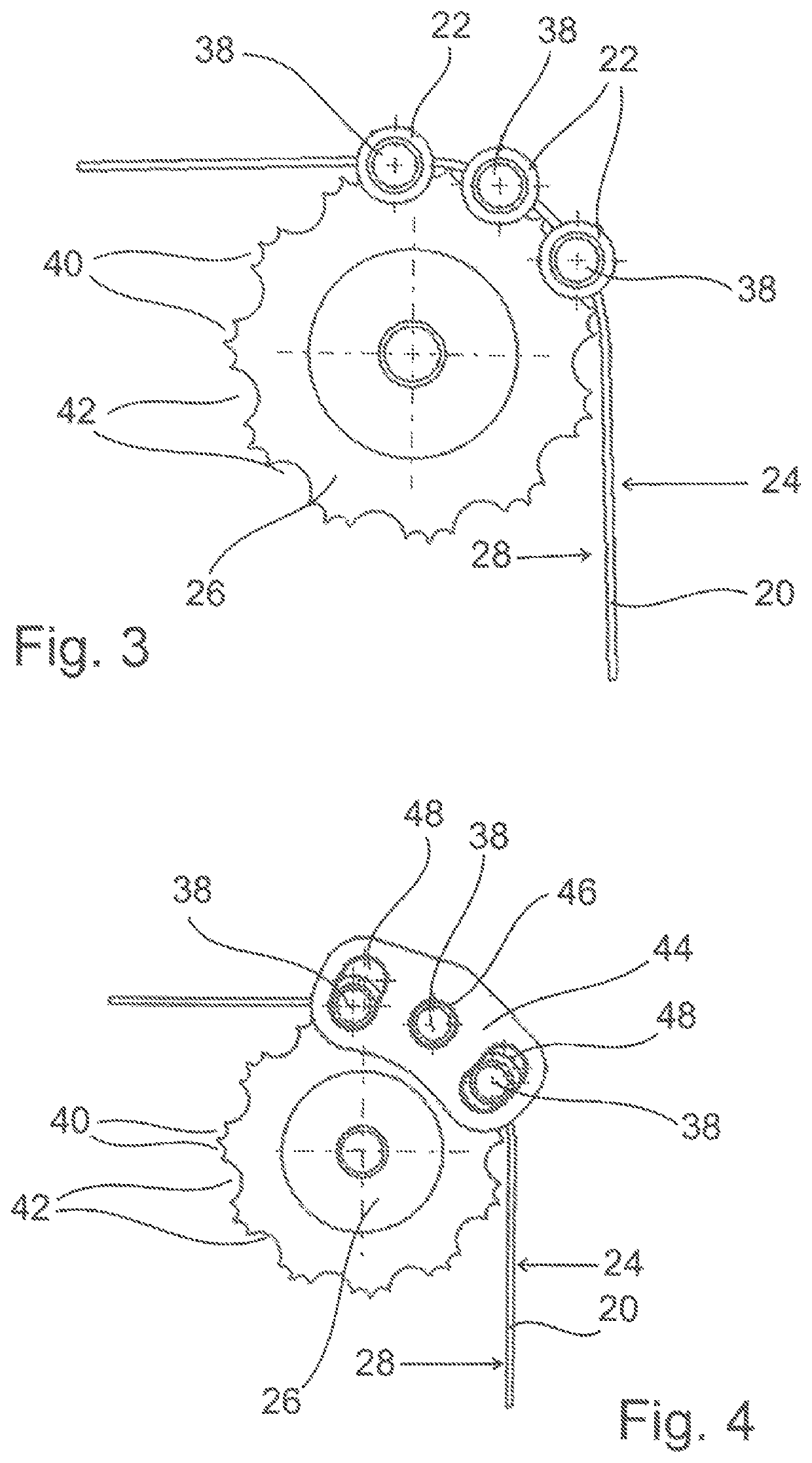Drive device for an element to be driven
a technology of a drive device and an element, which is applied in the direction of multi-purpose tools, door/window fittings, construction, etc., can solve the problems of frequent problems, insufficient toothed belt drivers, and requiring costly repairs
- Summary
- Abstract
- Description
- Claims
- Application Information
AI Technical Summary
Benefits of technology
Problems solved by technology
Method used
Image
Examples
Embodiment Construction
[0053]FIG. 1 shows a section of a toothed belt 20, on which an inventive force driver 22 is fastened. The toothed belt has an outer side 24 and an inner side 28 that faces a toothed disc 26 (see FIGS. 3 and 4). The inner side 28 usually has teeth 28 that are not illustrated in the figures.
[0054]The force driver 22 is formed by an essentially cylindrical body that is divided into an upper part 30 and a lower part 32. In the exemplary embodiment shown, the upper part 30 and the lower part 32 are connected to one another with connecting means 34, preferably clamping screws, in such a way that the toothed belt 20 is arranged between these two parts. In this case, the lower part 32 is arranged on the inner side 28 and the upper part 30 is arranged on the outer side 24 of the toothed belt. A serrated inner surface of the lower part 32, which faces and corresponds to the teeth of the toothed belt 20, is not illustrated in this figure. The teeth engage into correspondingly shaped depression...
PUM
 Login to View More
Login to View More Abstract
Description
Claims
Application Information
 Login to View More
Login to View More - R&D
- Intellectual Property
- Life Sciences
- Materials
- Tech Scout
- Unparalleled Data Quality
- Higher Quality Content
- 60% Fewer Hallucinations
Browse by: Latest US Patents, China's latest patents, Technical Efficacy Thesaurus, Application Domain, Technology Topic, Popular Technical Reports.
© 2025 PatSnap. All rights reserved.Legal|Privacy policy|Modern Slavery Act Transparency Statement|Sitemap|About US| Contact US: help@patsnap.com



